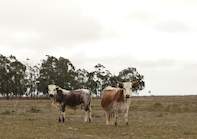The South African cattle industry is extremely dualistic, characterised by a highly developed formalised sector on the one end and an emerging to subsistence sector on the other end. Commercial farmers might have beef cattle as their only stream of income, but in most cases cattle production is seen as a way of diversifying production and market risks and adding value to production.

Farmers, for example, might keep cattle on their poorer soils that are unsuited for planting or they might use the cattle to add value to grain production by allowing the animals to graze crop stubbles after the harvest or incorporating feeding crops in their crop rotations.
Regenerative farmers also use ultrahigh density grazing, also called strip grazing, because the movement of the animals over the land in combination with their urine and manure helps to improve soil life.
The commercial farmers who keep cattle can be differentiated into two groups, namely stud farmers or commercial farmers. Many of the stud farmers, however, also have a commercial herd to which they revert animals that fail to meet the criteria to be included in the stud.
The stud farmers produce pure-bred animals that are aimed at improving the genetic performance of animals. A commercial cattle farmer, for example, may buy offspring or semen of a specific stud bull to improve specific genetic traits in their herds.